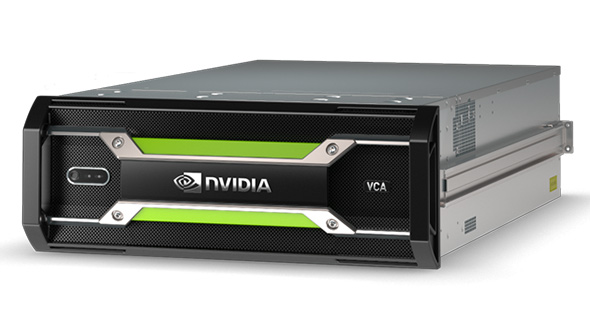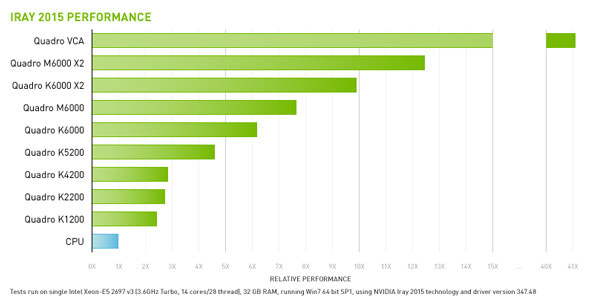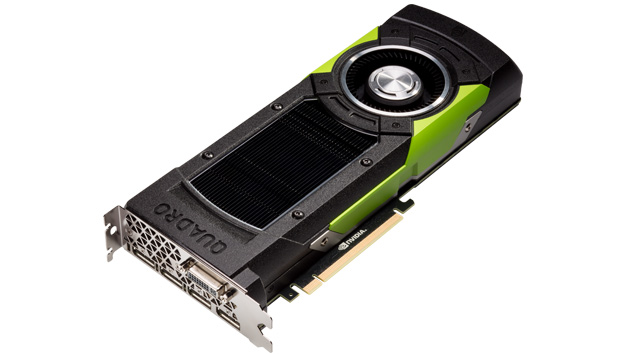New M6000 Card Replaces the K6000 at the Same Price, Soups Up the Eight-GPU Quadro VCA
Nvidia announced new graphics hardware and software at its GPU Technology Conference this week, including the new Quadro M6000 graphics card and a plug-in version of its Iray renderer.
The new leader of the Quadro line-up is the M6000, which offers Nvidia's fastest graphics processing, with up to 7 teraflops at single precision. The M6000 has 12 GB of GDDR5 memory, 3072 CUDA parallel-processing cores (vs. 2880 on the K6000), and 250W power consumption (vs. 225W for the K6000). The new card also sports four DisplayPort connectors and one DVI-I port. The M6000 is expected to sell for the same price as the previous K6000, which means somewhere between $3,000 and $3,600 on the street.
Also introduced this week was the K1200, a smaller but still powerful card designed for small workstations with 4 GB of memory, 512 CUDA cores, 45W power consumption, and four mini DisplayPort connectors. Nvidia expects it to be a big seller at a street price between $350 and $375.

With the arrival of the M6000, the company's Quadro VCA, a rebranded version of the Iray VCA first announced last year, gets more powerful. The VCA is a network-attached appliance that holds eight M6000 GPUs, allowing connected users to work more quickly with Iray or V-Ray rendering. "This is a monster," said Sandeep Gupte, senior director for Quadro product marketing. "It's the fastest GPU rendering you can get on a single node.
"If you want to scale beyond a desktop workstation, all you need is a power connector and cable and netowrk connector to start using it — no programming required. It gives you an insane amount of rendering power on demand."

Source: Nvidia
Meanwhile, Iray 2015 has been tuned for Nvidia's new hardware, speeding its interactive rendering performance up to four times faster than before, said Phil Miller, senior director of advanced rendering products. "It can do a car commercial with the best of them," he said.
Miller also noted that offering Iray as a plug-in allows more efficient development than coding it into Autodesk's different software offerings. "It allows us to get the latest rendering technology to people as quickly as possible and lets us connect outside the box," he said. "We made sure we were kosher with our ISV partners. We aren't stopping our support of them. In fact, we expect it will work inside some of their applications."
Among new features in Iray 2015 is support for X-Rite's appearance-capture engine, the TAC7, which helps users base rendered surfaces on physical reality. Short for "Total Appearance Capture," the TAC system captures color, texture, glass, and similar surface characteristics in a format that can be used by Iray to increase physical accuracy of a render. Meanwhile, Nvidia's material-design language, MDL, is being supported by paving and construction materials provider Oldcastle Materials and Allegorithmic.
"MDL is not a shading language; it doesn't have algorithms," Miller explained. "It's the what, not the how. Any physically based renderer could adopt it, and we're getting interest from some of the top companies."
The price and ship date of the new Iray have yet to be announced.
Crafts: VFX/Animation
Sections: Technology
Did you enjoy this article? Sign up to receive the StudioDaily Fix eletter containing the latest stories, including news, videos, interviews, reviews and more.











Leave a Reply